How to Start your Own Veggie Garden from Scratch— In Just 8 Steps!
Tuesday March 1, 2022
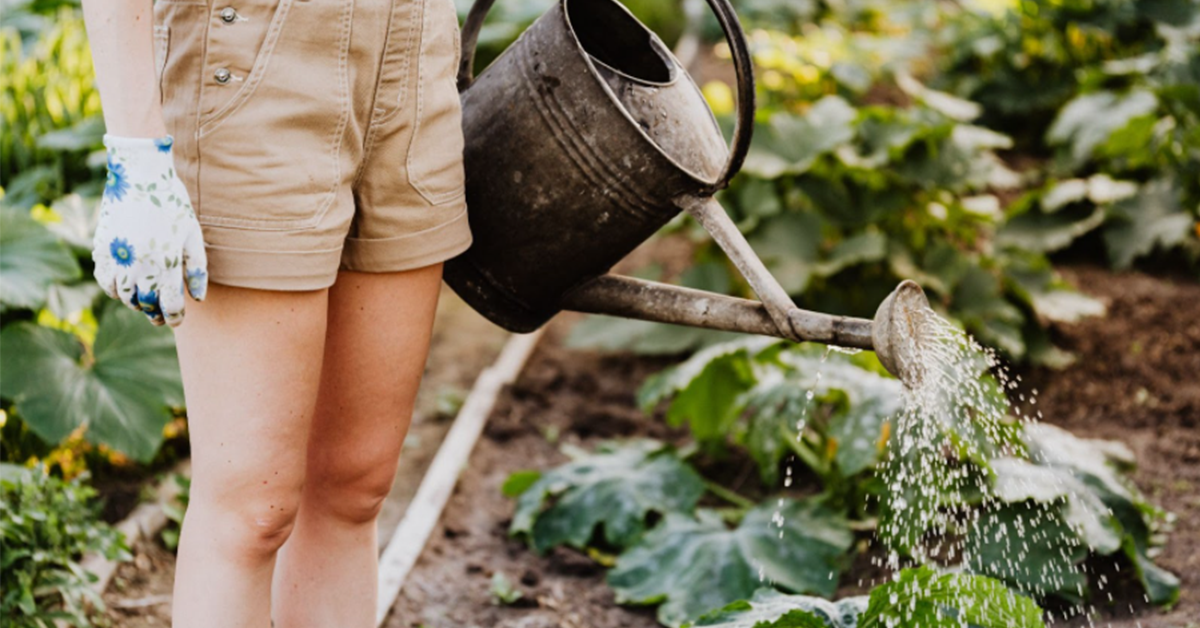
As Lakeland’s premier lawn care and landscape maintenance company, we have met several homeowners who ask us about starting a vegetable garden and a lot of them want to do it on their own to start a healthy hobby and to make use of their garden better.
Vegetable gardening at home in Lakeland can be a way to save money while you reap the benefits of nature. Growing your favorite vegetables or herbs from seeds can save you money. You’ll also find that the flavor and texture of garden-grown produce is even better than what you're used to finding at the grocery store. Plus, tending your vegetable garden counts as exercise! Here is our step-by-step guide on how you can start a vegetable garden in your backyard, from scratch.
1. Choose a Location for Your Veggie Garden
If you’re a beginner gardener, start small. It's also best to learn landscaping basics before investing tons of time and money in this hobby. You’ll get a feeling for how much time gardening takes. You’ll find out if you like spending time outside planting, watering, and weeding. You’ll learn how much produce you and your family can eat over the course of a summer.
You don’t need lots of land to grow vegetables. A good size for a beginner’s vegetable garden is 6x6 feet. It’s actually a good idea to start with a small garden. When you commit to a small space first, you start with a more manageable time investment, and you increase your odds of success because you can really focus on the plants that you have.
Select up to five types of vegetables to grow, and plant a few of each type. You’ll get plenty of fresh produce for your summer meals, and it will be easy to keep up with the chores. Growing vegetables in containers is also a good way to start out. With them you don't even need a yard; a sunny deck or balcony works fine.
If you think carefully about your own backyard even, you can probably identify some spaces that are cooler or warmer than others. Areas near brick walls or asphalt driveways are often warmer than trees or shaded areas. Some areas are more susceptible to wind than others.
No matter where you put your garden or what you decide to plant, there are two basic requirements that your location needs to meet for the best success: water and light.
Lots of Sunlight is Crucial
Like all plants, vegetables need the sun to photosynthesize. The fastest-growing vegetables need a lot of sun (at least 6 to 8 hours of direct sunlight a day) without blockage from trees, other plants, or fences. You won’t have much success if you plant sun-loving vegetables in shady spaces.
If your yard provides partial shade, plant vegetables and herbs that tolerate those conditions, such as lettuce, cilantro, kale, chard, spinach, parsley, chives, and thyme. Root vegetables like carrots, radishes, and beets might also work if your site gets at least 4 hours of direct sunlight a day.
If you have a sunny patio, try container gardening. That way you can place sun-loving vegetables and herbs such as tomatoes, cucumbers, dill, beans, basil, and rosemary, where they’ll do well.
Convenient Water Access Helps A Lot
The closer you can situate your garden to a water source, the better. You'll need to water frequently during the first few weeks after seeds germinate or seedlings are transplanted. This will help these fragile plants produce strong roots and stems.
When your plants are established in their soil, it's better to give your garden a huge drink every few days rather than a little sprinkle every day. Then the water will move deeper into the soil, which encourages roots to grow deeper, where it’s better to get nutrients they need to grow healthy.
2. Have Your Essential Gardening Tools
The tools that you need will depend on the size and type of garden you decide to grow. If you grow your vegetables in raised beds, smaller hand tools are more manageable than their full-sized counterparts. When you’re ready for a larger garden, bigger tools are better.
Shovels and trowels are excellent for digging holes, excavating new beds, and adding compost and other soil-enriching amendments
Hand-held shears are perfect for harvesting vegetables and pruning plants. You can also use loppers for trimming. You can use extremely long, very straight shoots as stakes for climbing plants like peas, beans, and cucumbers.
Gloves are essential in preventing that very persistent halo of dirt around your nail beds. Leather gloves are great as they’re thick enough that you can pull thistles and brambles by hand.
Use buckets to move potting soil, dump handfuls of weeds, or carry a harvest of fresh fruit into the house. It’s nice to have it in a few different sizes.
Needless to say, watering is essential to gardening. You can use a watering can or a hose. It’s nice to have a watering method that is gentler for young seedlings and a higher-flow method for mature plants.
3. Decide Which Veggies You Want to Grow
First and foremost, you should grow what you love to eat. The greatest joy of gardening is eating the produce that you’ve grown. The flavors of homegrown produce are incredible compared to store-bought veggies.
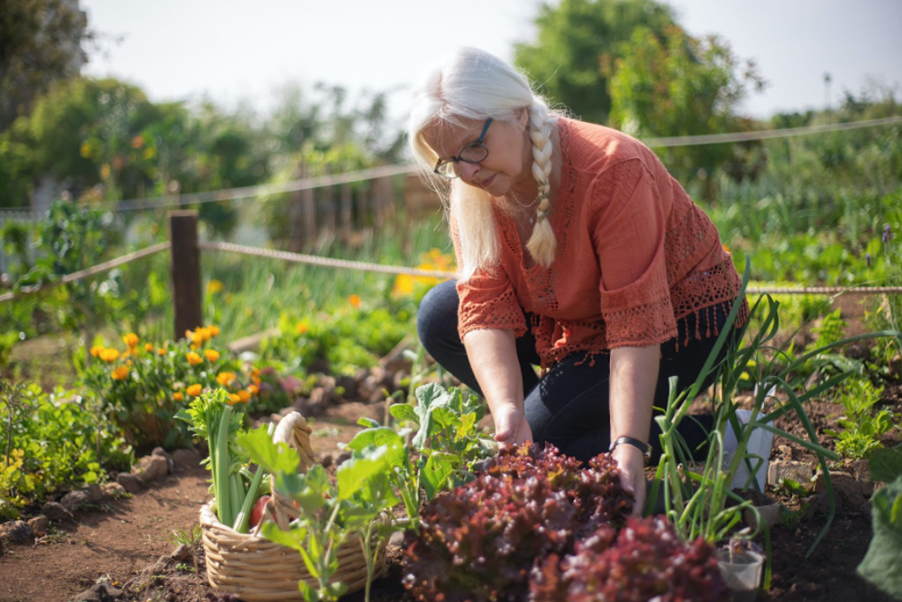
Easy Vegetables to Start With
If you are a beginner or even a more experienced gardener who has a lot going on, you’ll want to choose some easy-to-grow plants that will more or less take care of themselves.
Here are ten of the easiest vegetables to grow:
- Peas
- Carrots
- Lettuce
- Beans
- Swiss Chard
- Zucchini
- Potatoes
- Kale
- Garlic
- Radishes
Category is Heat-Loving OR Cool-Season Vegetables
Heat-loving vegetables include tomatoes, peppers, spinach, beans, and cucumbers. These vegetables tend to really take off once it gets warm. Their fruits take a little longer to ripen, but they can be very productive plants, well worth cultivating. They will take as much sunlight as you can give them.
Cool-season vegetables like lettuce, kale, cabbages, and radishes will do well in areas that get some shade over the day. In the middle of a hot summer, an area with partial shade can be exactly what you need to stretch your cool-season crops a bit further into the year. Too much warmth, and these plants tend to ‘burn’.
The best way to determine a good position for a vegetable garden is to observe your Lakeland landscape on how it looks in relation to the sun through the day. There are distinct shade areas – these are great places for vegetables that appreciate some protection from the hot afternoon sun.
Productivity
Think about how much you and your family will eat and how likely you are to freeze, can, or give away excess produce. Then be realistic about how many seeds or plants you need to put into the ground. (Many beginners make the mistake of planting too much.) Vegetables like tomatoes, peppers, and squash keep providing throughout the season, so you may not need many plants to serve your needs. Other vegetables, such as carrots, radishes, and corn, can be harvested only once and then would need to be replanted.
Successive Crops
Planting both cool- and warm-weather vegetables will give you a harvest of vegetables and herbs continuously through the spring, summer, and fall. In early spring, grow lettuce, greens, radishes, peas, carrots, and broccoli. After you’ve harvested your cool-weather crops, you can plant hot-weather favorites, such as tomatoes, peppers, eggplant, and herbs. In fall, you can harvest potatoes, cabbage, and kale.
Lakeland Tip: By planting vining crops like green beans and peas, you make use of vertical space in the garden and boost yield per square foot.
4. Plan Your Veggie Garden Plot
Choose either intensive cropping or row cropping when you plan your vegetable garden’s layout.
Intensive Cropping
Boost your Lakeland landscaping vegetables, excluding the ones that vine (such as cucumbers). The downside of this method is that you have to weed by hand because the plants grow so close together.
The square-foot method, in which you subdivide a raised 4x4-foot garden bed into 1-foot squares using a physical grid, is a specialized version of intensive cropping. The planting formula is simple: 1 extra-large plant per 1x1-foot square; 4 large plants per square; 9 medium plants per square; and 16 small plants per square. Mix and match as you want.
Row Cropping
Place plants single file in rows at least 18 inches apart so you can walk easily between them.
Tip: Tall plants generally do well on the north side of the garden. This includes naturally tall plants like tomatoes and plants that can be grown on vertical supports, including peas, cucumbers, and planting beans. You can also make your own A-frame trellis for growing vegetables.
5. Start Plants in Good Soil, So Prepare Your Soil
For the best harvest, your vegetable garden needs the best soil you can give it. Rich, healthy soil is something you know when you feel it: It’s easy to dig and drains well.
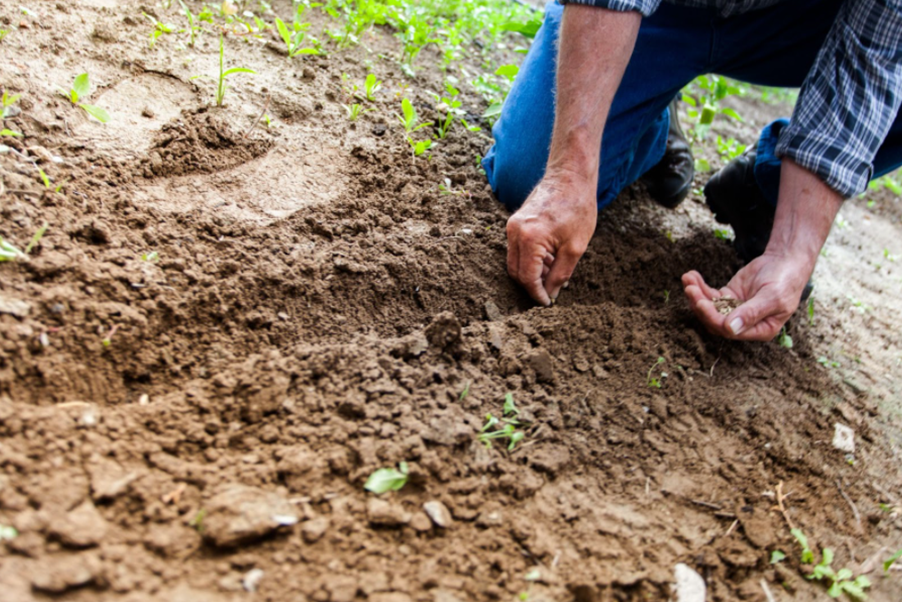
There are three main types of soil: sand, silt, and clay.
Sandy soils tend to drain water too readily which makes it difficult for plants to soak up the water they need, while clay soils hold onto moisture too well which can drown plants or cause very heavy, compact soil.
Pick up a trowel's worth and put it in your hands. Does it feel gritty? Too much sand. Is it powdery? Too much silt. Is it sticky when wet? Too much clay. The combination of these three types, and in which specific proportions, determines the texture of your garden soil. That texture affects drainage and the availability of nutrients.
The perfect trifecta of all three soil types is known as “loam.†Very few are blessed with loam, so most of us “upgrade†the soil we have to a better state.
Fortunately, no matter what the texture may be, all soil can be improved over time by incorporating organic matter into it.
- If you have sandy soil, add peat moss or coconut coir. They are highly absorptive and will balance out the sand.
- If you have heavy clay soils, compost can make it ‘lighter’. You can also use gypsum as a clay breaker.
- The best thing you can do for your soil is mulch. Mulch enriches sandy soil and makes clay soil less dense. Mulch all your plants and gardens in a deep layer. You can use many different things for mulch, like hay, straw, sugar cane trash – anything that eventually breaks down.
- Avoid or remove rocks as they don’t add anything to your soil and can increase summer temperatures to the point that it burns your plants.
- Clay soil contains very small, dense particles that hold moisture but don't allow much space for plant roots. Compost helps separate those tiny clay particles so water can drain more freely and plant roots can get needed oxygen.
To prepare your soil for planting, spread any needed amendments like compost and work them into the soil with a tiller or spade. Avoid stepping on freshly tilled soil or you’ll compact it and undo all your hard work. Then rake the surface smooth and water thoroughly. Allow the bed to rest several days before you plant so the soil amendments can do their work.
Tip: Raised garden beds are a great option if you have poor soil.
6. Plant Your Vegetables
It’s time to take those seeds out and get to planting! Know that not all seeds are the same. Tomatoes and peppers can take weeks to germinate, while beans, peas, and radishes can come up in a couple of days.
Be Picky
Pay close attention to the description on the seed packet, tag, or label. Each variety of vegetable comes with certain characteristics. Some produce smaller plants ideal for containers or small gardens. Other varieties offer better disease resistance, improved yields, or better heat- or cold-tolerance. Start by choosing veggies you like to eat, then look into their sizes and care needs.
You should always refer to the seed packet for instructions. But here are a few tips and tricks that apply to most seeds:
Soaking seeds overnight in water or applying heat from the bottom speeds up germination times. Some seeds need light to germinate, so you wouldn’t want to cover them in soil. It’s always a good idea to read the back of the seed packet so that you catch things like this. Many lettuce varieties, for example, need some light to germinate.
After sowing your seeds, maintain consistent moisture until the seedlings are established. Soaking seeds increases germination rates and speeds it up too. It’s also a good idea to learn more about germination times. That way, if seeds aren’t coming up after their germination window, you can resow and not lose time waiting for plants that aren’t growing.
Do You Plant Everything in the Seed Packet?
You may think that you need to plant all of the seeds in the package or else they will not last for the following year. But wait.
While age is an important aspect of germination, most seeds will last a few years before germination rates decline in any significant way. If you have a good germination rate from a package of seeds one year, you are usually okay to sow again the following year.
The fridge is generally the best place to keep your seeds for next year. Make sure they are in a moisture-proof package.
Grow Vegetables From Kitchen Scraps
Not all vegetables are started exclusively from seed. Many plants have secondary methods of reproduction.
Potatoes are typically started from the previous season’s tubers. Anywhere a sprout emerges, a new plant will grow. Sweet potato is one of the easiest vegetables to grow from scraps. If you have one that is a bit past its best, just plant it!
Garlic is grown from the cloves of the previous harvest. The longer garlic is grown in one location, the more finely attuned it is to grow in that location. It’s not unusual to find varieties of garlic that are unique to your microclimate and more resilient to life in your specific area.
Celery, green onions, bok choy, and lettuce will all develop new growth when placed in clean water in a sunny location. Save the seeds from grocery-bought vegetables and fruits too– you can sprout all of these for free plants in your Lakeland landscape.
When starting plants this way, you want to keep the bottom two inches of the plant intact and submerge the lower half of it in water. It’s important to regularly change the water. After a few days, you should start to see some new growth.
One of the fruits that is so much fun to grow from scraps is pineapple. Simply twist the top off and cut the bottom leaves off to make it easier to plant. Leave it to dry for an hour or two and plant in a pot or straight into your garden.
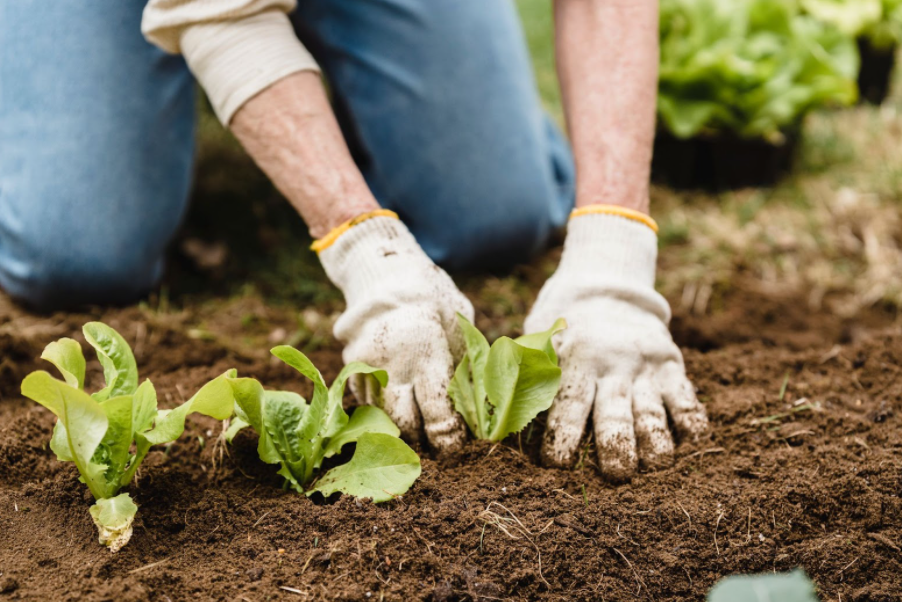
7. Grow Your Vegetables
Whichever vegetables you choose, you need to give your plants adequate water and nutrition.
Water
So often, water is the secret ingredient we need to make our gardens thrive. Thirsty plants are stressed ones, and stressed plants are more likely to suffer pest damage, fall prey to diseases, and ultimately fail to produce a healthy harvest for you and your family.
Water deeply rather than frequently. This will encourage the plants to form deep root systems, which makes them more resilient in the long run. It also means that if you miss a watering session, your plants won’t wilt so readily.
Fertilizing
When we first moved in, the soil was really depleted. We bought organic fertilizer in ton bags and went hard with it. The right organic fertilizer adds wonderful stuff to your soil. It made a huge difference to our soil!
As the summer goes on, leaves may yellow. This can be a sign that plants need fertilizing.
There are many ways to add nutrition into your soil, including additions of:
- Compost
- Kitchen scraps
- Compost tea
- Epsom salt
- Organic fertilizer
- Worm farming
- Mulch
Each method takes a different amount of time, but usually, liquid fertilizer additions are more quickly accessed by the plant.
To identify which minerals your soil is missing and to get a complete picture of your soil health, a simple soil test is needed. Soil tests are performed by a lab and tend to be fairly inexpensive.
Mulching
Mulch will prevent plant disease, suppress weeds, prevent surface evaporation, protect plants from temperature fluctuations, and feed your soil.
Straw and sugarcane trash are great mulch, but leaves, grass clippings, and sawdust will also work.
Avoid heavier mulches like wood chips or gravel, as they won’t break down easily. Two to three inches of material is enough to do the job, but we encourage you to go deeper than that. The deeper the layer of mulch, the better.
Pruning
We prune plants in our gardens for a number of reasons, including:
- Keeping plants manageable
- Improving air circulation around plants that could be sensitive to fungal infections
- Encouraging a plant to focus its energies on developing healthily
- Preventing “bolting†or unwanted blooming
If you don’t have time to learn the complexities of pruning, the most basic idea is to remove sections that are kinda dead. If it’s browning or has signs of disease, then that leaf isn’t useful. Removing the leaf will encourage the plant to focus on new and healthy growth.
8. Fight Pests and Diseases
Follow these tips for protecting your veggies:
Keep Animals Out
Animals can wreak havoc in an edible garden. It only takes an 8-foot-tall fence to keep pets from jumping into your garden. A fence needs to extend 6 inches beneath the soil to stop burrowing critters from digging their way in.
Stop Pesky Insects
Picking off large insects and caterpillars by gloved hand is a safe, effective way to deal with limited infestations. For bigger quantities of insects, try insecticidal soap sprays that you can find at most garden supply stores. Whichever pest-control chemicals you use, carefully follow the manufacturers’ directions.
Weed Out Weeds
Weeds compete with your vegetables for light, water, and nutrients, so it's important to keep them to a minimum. A mulch of clean straw (not the plastic type of course), compost, or plastic can keep weeds at bay around larger plants like tomatoes.
Fight Diseases
Reduce the likelihood of fungal diseases by watering the soil, not the leaves of the plants. If a plant falls prey to a disease, promptly remove it and throw it in the trash; don't add sick plants to your compost pile. Additional disease preventatives include growing vegetable varieties listed as disease-resistant and changing the location of your plants each year to reduce disease-causing microbes from building up their populations.
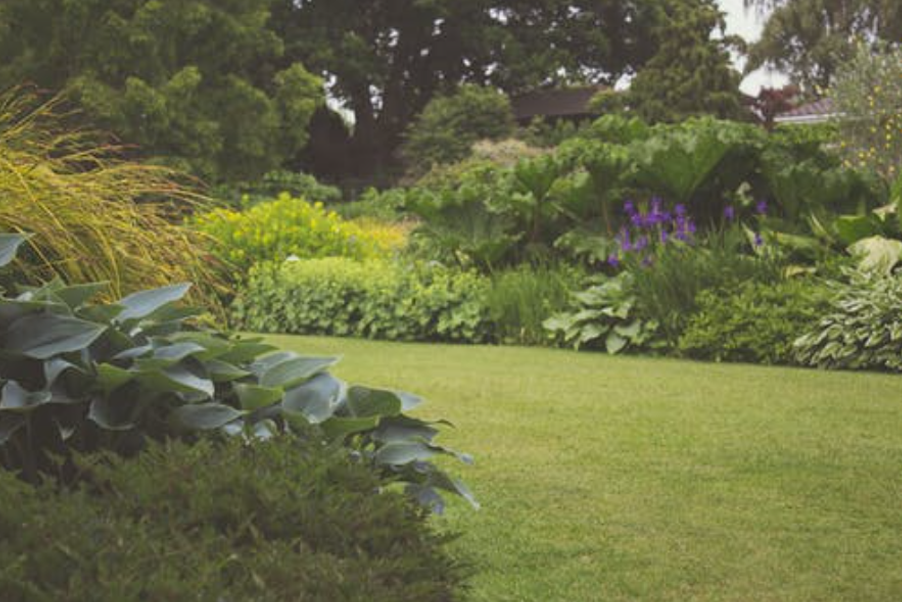
If you have a Lakeland home garden, consider growing vegetable plants and create unique recipes fresh from your yard. With this, Pyles, a Lakeland landscaping provider is here to help you maintain and enrich your well-loved garden, for a healthy harvest!
For more gardening and landscaping tips from the best Lakeland landscape maintenance team, watch out for our next blog entries!
